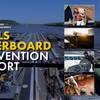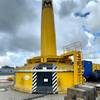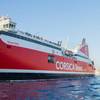Marine News January 2015 - Editor's Note
Our annual Ferry and Passenger Vessel edition kicks off the New Year in high gear, even if oil prices aren’t necessarily following suit. As vessel operators – our ferry drivers included – celebrate lower bunker prices, another maritime subset frets over what might happen to the offshore service market if the downturn in crude oil prices continues unabated for a significant length of time. That said; if your market focus is ferries and/or passenger vessels, then you won’t find another more comprehensive or diverse look at this sector than that which is depicted in the pages that follow. It turns out that the passenger vessel and ferry industry is a forward-thinking, innovative and problem solving group of businesses.
From the Passenger Vessel Association to the World Ferry Safety Association and all the way to global ferry advocates Interferry, we’ve got you covered. And, there is tremendous amount of activity ongoing in this sector. For example, and despite some well-deserved criticism over the past year, most of which revolves around international events as opposed to that which happens on this side of the pond, the domestic ferry industry has shown itself to be resilient, safe and well operated. That’s not to say there isn’t room for improvement – clearly, there is. It’s also true that the U.S. ferry sector is one of the most highly regulated of any maritime business. This edition naturally deals with those challenges, and much, much more.
January also brings us, appropriately enough, sharp focus into the world of cold weather and Arctic operations. And, when we talk about cold weather issues, Alaska comes to mind first. There, workboats face unique challenges as they go about their myriad mission sets. Ice navigation and related issues aren’t necessarily confined to the great snowy North, however. For that reason, the U.S. Army Corps of Engineers (USACE) Cold Regions Research and Engineering Laboratory (CRREL) in Hanover, New Hampshire focuses on phenomena such as icing on superstructures, brash ice and propulsion systems, and controlling ice dams. And, while CRREL scientists are at home in the highest polar latitudes, it’s also true that a lot of its work takes place in the “lower 48,” where cold weather can put a crimp on Great Lakes and inland waterborne commerce. That story begins on page 41.
Separately, and as the USACE plies their innovative research to improve the plight of brown water mariners working in adverse weather conditions, private industry isn’t sitting on its collective hands, either. Cutting edge, safer deck equipment and machinery has been introduced to the inland towboat and barge sector. The same firm – Patterson Manufacturing – that in a very short period of time made the YoYo barge winch just another part of everyday riverboat lexicon has introduced a potentially game-changing boat-to-barge coupling system. Everyone, whether they reside in the ferry, offshore, inland or cold weather sectors, is looking for the same things: efficiency, economy, safety and yes, profitability. And it all stems from the same place: innovation.
(As published in the January 2015 edition of Marine News - http://magazines.marinelink.com/Magazines/MaritimeNews)











